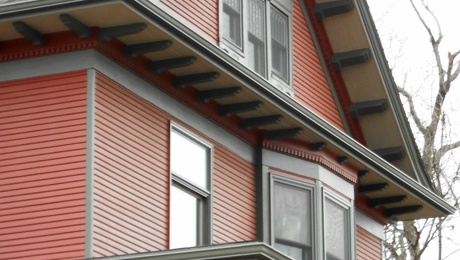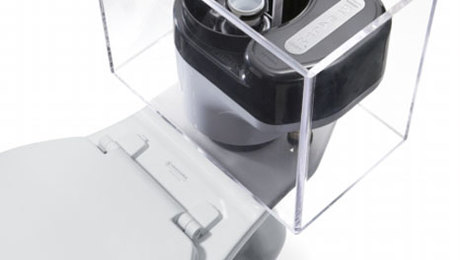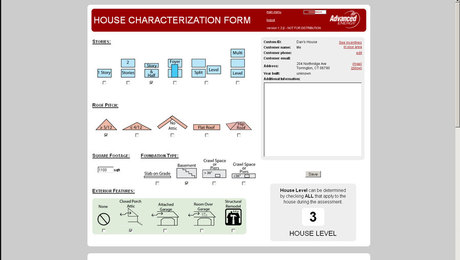Do you have a quote for an insulation upgrade? Use our calculator, based on an equation from the U.S. Department of Energy, to find out how long it will take to payback your investment in terms of savings in energy costs.
WHAT YOU NEED TO USE THIS CALCULATOR:
1. Determine your current type of insulation and the thickness/amount in your walls or attic.
2. Estimate the square footage of the walls or attic space to be upgraded.
3. Find a recent copy of your utility bill to determine your cost per unit.
4. Finally, have a copy of the quote from your contractor, or—if you plan to do the work yourself—the cost of the necessary insulation materials and installation equipment.
ABOUT THIS CALCULATOR:
The equation that powers this calculator was developed by the U.S. Department of Energy. In addition to the details you enter, it relies on government compiled averages such as the average number of heating days per year in your region, the efficiency of various heating systems, and the energy efficiency of the insulation products available to builders and homeowners. All of these factors help provide a more accurate calculation no matter where you live or what type of fuel you use to heat your home.
That said, it is not perfect. For example, it does take into account the wild fluctuations in energy costs. And it doesn’t account for other factors specific to your home, like air leakage. For a more complete overview of things to consider when thinking about an energy upgrade read Mike Guertin’s A Complete Guide to Estimating Energy Efficiency Payback. Plus, read one example of how this calculator was used to estimate the payback of an attic insulation upgrade.
LEARN MORE ABOUT UPGRADING YOUR INSULATION:
FineHomebuilding.com features a collection of articles and videos with advice and how-to techniques around upgrades.
ARTICLE: New Insulation for Old Walls
ARTICLE: Attic Insulation Upgrade by Mike Guertin
VIDEO: Soy Foam Insulation with Chris Ermides
VIDEO: Blowing Fiberglass Insulation with Mike Guertin
ARTICLE: Prepping for Spray Foam Insulation by Michael Chandler
ARTICLE: Vapor-Smart Insulation by Justin Fink
ARTICLE: Better Basement Insulation by Mike Guertin



























View Comments
This calculator will likely give a user false information for a number of reasons. It likely doesn't adjust for air leakage which if not addressed could make any insulation upgrade nearly worthless from an energy saving perspective. Other questions aren't addressed either that would impact the results: Does this calculator use basis dollars (2009) or does it ignore overall inflation (diminishing value of money)when determining the payback period? Does it adjust for fuel price inflation? If not, it is likely that the resulting period would be much shorter. Read my blog post a better explanation on how to calculate payback: https://www.finehomebuilding.com/item/9365.
Point taken, Mike, that this is only one piece of the puzzle when figuring out if an energy upgrade is worth the investment. Regarding the calculator: Although the DOE's equation doesn't adjust for inflation, it manages some of the risk in the underlying equation, which you can review with the link we provided. And, the rule of averages has to apply with a payback estimator like this. Obviously a leaky house isn't going to see the same savings as a well-sealed one even if all the data points are the same, and the calculator can't adjust for that.
The one problem I saw with the calculator is it didn't let me choose the proper insulation for the upgrade. For example, the house I input had 3 inches of blown-in fiberglass in the attic (not listed). I upgraded with 12 more inches of fiberglass batt, which is not listed in the options for the upgrade types. It assumed I was changing types of insulation. I chose to use fiberglass batts because I salvaged them from a commercial remodel job and didn't want them going to the landfill.
This calculator also ignores the most common type of attic insulation in the northwest - blown-in fiberglass.
Why was fiberglass left out?
All above are true, but, more fundamentally, it appears to only be calculating heating costs, not cooling. Why not address the South, as we cool with coal-fired power plants?
Is this calculator designed to account for the inherent R-value in my ceiling/roof or should I add that into the "existing insulation" number? In my case I'm considering adding insulation in the "slanted" ceiling of my finished attic - not cheap to do. The inherent R-value of the slated ceiling and roof is approximately 3.5 (including interior air layer, drywall, 4 inches of airspace, plywood roof sheathing, asphalitic shingles, and external air layer). If I assume "no insulation" the calculator assumes R=1, and with my project I'd add R-11 for a total of R12 and the calculator says my project would pay for itself in 6.2 years, which I'd consider to be worth doing. However, if I assume that since my ceiling/roof has an inherent R-value of 3.5 (4 was the closest I could input for existing insulation, so I input 4) and I'd add R-11, then my project would pay for itself in 26.8 years, which would make it not worth doing in my mind. Please clarify as this makes a HUGE difference. Thanks!
One thing that also must be considered about this calculator is that it shows payback in terms of months and years, but because there is no explanation I assume that these are only months when the furnace is running. So an 8 month payback means actually more like two Winters in some places. The 26 year payback could mean more like 52 years!